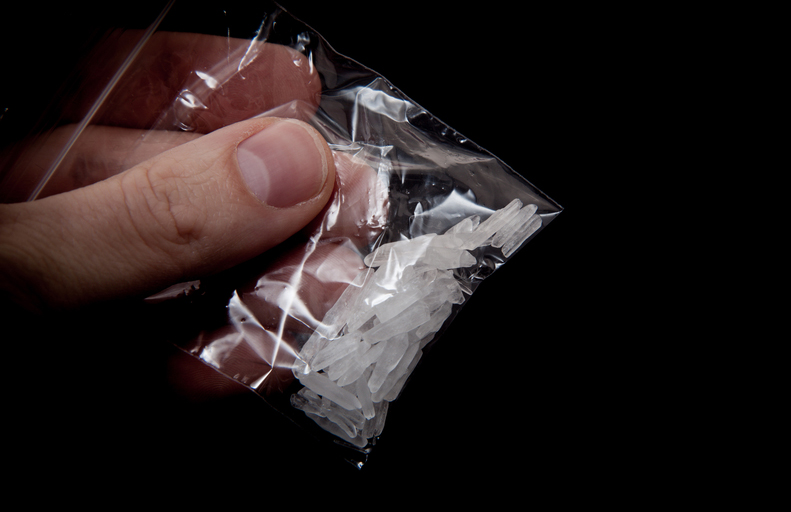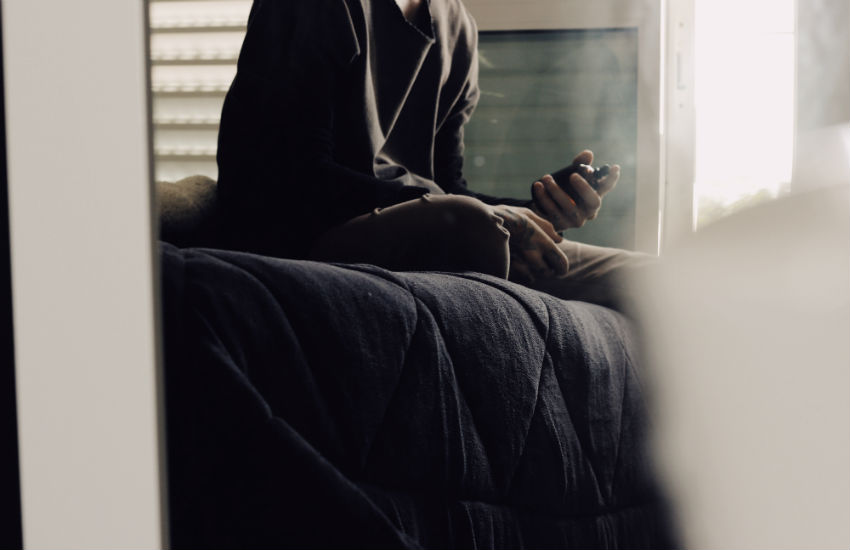Rarely a week passes without us hearing about a celebrity entering a rehab or recovery center. What actually goes on when you enter such residential units remains, for most of us, something of a mystery.
Best-selling books, such as James Frey’s A Million Little Pieces and gay author Augusten Burroughs’ brilliant Dry both offer some insight into what it’s like inside a recovery facility. The latter, in particular, recounts the experience from a gay perspective.
Gay Star News talked to three other gay guys who had been through the experience.
Richard
Richard is in his late 40s and lives on the island of Jersey off the coast of southern England. He says he became aware in his early 30s that his drinking was getting out of hand.
In his late 30s, he made contact with alcohol counseling services on the island. He personally found them of limited use.
‘It got to a point where I had to give up my job before I was dismissed. Because it was becoming very obvious at work. They could smell alcohol on my breath every day.’
He says he was drinking up to a liter and a half of vodka a day. Becoming increasingly desperate, he changed doctors. His new physician suggested he enter a residential unit.
Richard voluntarily booked himself in the Priory in Southampton. The Priory is one of the best-known recovery center groups in the UK, with over a dozen premises.
It has a reputation for being favored by the rich and famous, although Richard is keen to stress his center had a wide mix of people (‘no celebrities’). The NHS (National Health Service) or medical insurance covered funding for most, but Richard paid for his own four weeks of treatment.
Some users need help to detox
Richard says he continued to drink right up until the moment he walked through the door for his stay.
In fact, he was repeatedly warned not to try and go cold turkey himself as this could be dangerous. For alcohol, and certain other drugs such as opioids and heroin, heavy users may need medical assistance to detox.
After an initial evaluation with a doctor, Richard was informed he was a suitable candidate for treatment. They told him he could start his residential course a few days later.
He says being informed the center would take him, ‘was scary, because although I really, really wanted to give up drinking, it was really becoming a reality. I saw him on the Tuesday and I think on Thursday they told me I could come in on the Sunday.
‘At this point, I may add, the alcohol had got so bad that I could barely walk. I was using a walking stick. And I couldn’t walk very far. I’m 6’3” and I weighed just over 8 stone [112 pounds]. I was welcomed by a nurse and she took me down a small corridor.’
Some people entering rehab need assisance to safely detox (Photo: Felipe P Lima Rizo for Unsplash)
Beginning rehab
‘It’s a very old building and it has all the original features, except you could tell it wasn’t like a country manor anymore because of the fire exit signs, and a sort of hospital atmosphere about it,’ he says.
‘But it was clean and comfortable looking, and we walked down this corridor to what opened up to be a nurses station, and all the residential rooms were off there.
‘I was shown to a room and they said, do not close your door, you’re not allowed to close your door. We are monitoring you every 15 minutes.’
Richard was explained the ground rules. These included no communication with the outside world for the first week, so no cell phone or computer. He also wasn’t allowed to have anyone else in his bedroom. Clients were encouraged to socialize in a communal lounge area.
Once his blood alcohol levels sunk to a certain level, medication was administered to help his body detox safely.
Difficult first week
‘The first week was very hard,’ he reflects.
He says it wasn’t so much coming off alcohol he found most challenging, but having to take part in tough therapy sessions.
‘It was almost as if, and they wouldn’t say this themselves, but they smash you to pieces and tell you how bad you’ve been. How bad you’ve been to other people, people who love and care about you. And what you’ve done. They basically break you down to make you realize what state you’ve got yourselves into.
‘But after the first week, then it changes. Then it’s all about building you back to being someone who can cope without alcohol and making you feel good about yourself. I know they wouldn’t put it in those words, but that’s how it felt at the time.
‘In fact, the first week, I just wanted to go home. It was that bad. But I persevered and carried on with it. You can leave at any point. You’re not a hostage there.’
Richard’s group therapy sessions included the same people, so they all got to know each other very well. He felt able to be discuss being gay, and says a willingness to be open about one’s life is essential in recovery.
Eating properly for the first time in ages (‘the food was excellent’), he quickly began to put weight back on after being underweight. Not everyone at the center was there for addiction issues. Some had eating disorders, while others had self-harming issues. They treat a wide range of problems.
Alcoholics Anonymous
The only time Richard left the Priory was to be taken to Alcoholics Anonymous [AA] meetings. His therapists encourage patients to attend meetings and to continue to do so after their discharge. However, there was no 12-step element to the Priory treatment itself.
‘It was somewhere between a hospital and a hotel, put it that way. You walk into the room and it felt like a hotel room. It wasn’t lavish but it was more than Premier Inn, but not quite the Ritz.’
Richard has not had any alcohol since leaving.
‘The Priory goes on about ‘You must go to AA meetings’. Although I did say to myself, I don’t want to be going to AA meetings for the rest of my life. What I want to be is a normal person. I want to be like everyone else. And that doesn’t involve going to AA meetings.
‘But for the first six months, I did go to 2-3 meetings a week. Until Christmas. I just wanted to get over the Christmas period, but after that I stopped and I haven’t been since, and that was 11 years ago.
‘I had a lot of faith in the staff. That first week it was difficult. But I still look back at those four weeks as money well spent, and they did a good job. I suppose I’m one of the success stories.’
Rob
In the US, recovery often follows a 12-step model.
12-step recovery was a system devised in the US in the early 20th century. Those with addictive or compulsive behaviours attend groups with fellow sufferers. They work through the 12 steps with a sponsor, share their experiences, and place their faith in a higher power helping them.
One man with experience of this is Rob [not his real name], from California.
Rob began experimenting with drugs at school. He tried crystal meth for the first time when he was 22. He says there was no gay scene were he lived and many of the men he met on apps or via Craigslist were into the party’n’play scene.
Rob began using daily. Quite quickly, his meth addiction took over his life.

Crystal meth is the common name for Methamphetamine (© Daniel Kaesler | Dreamstime)
‘I had lost my house, totaled a car, had no job and was homeless living out of a car. About a week after that I went home to my parents and asked them to put me in rehab,’ he told GSN.
He has been in three different facilities. The first one he was sent to by his folks. He was asked to leave after two weeks. The second two facilities he had to attend after running into trouble with the law and as a condition of his bail.
Do some research into your facility and ask questions
Rob says all three facilities differed slightly. He’d advise anyone to try and do some research about places before attending.
‘I had no idea what it was going to be like. Each one I’ve been in has been a little different to the last.
‘The first one, it was smaller, it was an eight-bed facility, and you get there, and they interview you, and decide what they think you need, and you kind of go from there. That’s been the case with every one I’ve been to, it just depends on … I don’t want to say calibre but what type of clientele the place caters to.’
Asked to leave
He was only at the first place for two weeks. He fell ill with mononucleosis (Glandular Fever) and was asked to leave.
‘I’ve come to find out now that this facility may be very nice but it’s not exactly above board. Everybody I talked to afterwards says that wasn’t exactly the right way to handle it. It’s not unusual for people coming off drugs to fall ill.
‘The main thing I tell people is check the reputability of the place. Because a lot of places now just open for money. The first place I went to was $40,000 a month.
‘It might have been in a house in the mountains with a sauna and steam room, and a personal chef and everything, but in terms of actually working on yourself, I didn’t do shit there. I didn’t do any classes, I didn’t do any counselling. I was just there for two weeks and then they made me leave.’
He says he wants, ‘For parents or loved ones to ask questions that they feel need answering, and not let their desperation in a direction that their gut tells them not to.
‘After talking with my parents, because now we have the best relationship ever, they told me they were not really getting a good feeling from the first place at all, but they didn’t know what the fuck else to do, so they sent me there anyway.’
‘And the questions they didn’t ask were, ‘What do you do for somebody afterwards? And what’s your policy if someone is sick?’
Arrest and returning to rehab
Rob left the facility and was soon doing drugs again. After an arrest for burglary and a grand theft charge, he went to a different facility as part of his bail arrangement. He was there for 36 days. He relapsed two weeks after that and then went to the Betty Ford Center.
In total, he was there for three weeks as an in-patient, followed by six weeks of day treatment (‘which is basically like in-patient but you live in a sober living facility’), and then six weeks of Intensive Outpatient treatment.
Rob had a relapse shortly after leaving the facility, but has been clean since the summer of 2016.
Like Richard, he says he had to hand over his phone. He could make limited calls to approved contacts.
His days in recovery followed a similar pattern.
‘You usually wake up and do some sort of meditation thing, where you read an AA or NA [Narcotics Anonymous] book, a daily reflections book, and then go around in a group and share about that. Then have a meal, and then group counselling. And then maybe some free time, lunch, group or individual counselling, then dinner, and then often times a meeting in the evening.’
‘Hour by hour’
He praises the center’s staff and highlights the fact they have a dedicated LGBT treatment program.
‘I’ve never had a bad experience with a staff member at rehab. Mostly they’re not the most highest paid people, except perhaps medical staff, like psychiatrists. But they’re all there because most of them have been through it.
He says most of his counselors have been recovering alcoholic or drug addicts themselves.
‘So, most people get into it with the idea that they can help people get out of what they’ve been through.’
What was the hardest part for him?
‘Probably trying not to worry about what I was going to do afterwards. Actually taking advantage of the time. It took a lot of realizing that this was what I needed to do. And not focussing on what was happening outside.’
Taking it day by day and not worrying about the future, I ask.
‘Sometimes hour by hour, really.’
Keep up the work
Besides advising people to check on the reputation of facilities, Rob says he’s personally wary of attending a facility a great distance from where one lives. He identifies benefits from remaining in close contact with some of the other recovering addicts he met, and attending some of the same 12-step meetings afterwards. However, others in recovery have other opinions about this. Some see benefits to being far removed from one’s local environment.
Either way, once you leave rehab, all agree you have to keep working on yourself.
‘Rehab’s great, but if you don’t follow through with anything when you leave, it’s not going to work,’ says Rob.
Matt
Lastly, there’s Matt [not his real name].
Like Rob, Matt became addicted to crystal meth. In his late 30s, he began to make serious inroads into tackling his problem. This began with attending a SMART group in the UK. (Self-Management And Recovery Training).
A little like 12-step, this is a type of peer support group where people can help one another with the challenges of controlling their addiction.
Through talking with others, and medical professionals, Matt decided that a residential recovery was the best option for taking back control of his life. He signed up for a six-month stay.
‘Six months seemed an awful long time. Although people were saying six months sounded like the amount of time I needed, I thought I didn’t know if I could cope with that.
‘So initially I said three months, but I soon realized I wouldn’t have been ready. Three months wouldn’t have been enough. That would have got me to a stage of being open about my past, and my story, and the things that were difficult for me. But I wouldn’t have got any further, and I really needed to look at how I can change things and move forward.
‘It wasn’t an easy process. It was tough. In a sense, it’s not like prison, but in a sense, there is a regime and you’ve got work to do.’
‘Uncomfortable things I had to be open about’
Matt’s experiences echo Richard’s and Rob’s. Communication with the outside world is minimal. These begin with an escorted trip once a week outside, building up over time. Treatment is a mixture of one-on-one and group counseling, and lots of work that involves looking back at your life and what brought you to your current situation – and how to move forward.
Matt says having to share with strangers was challenging, as well as living alongside them almost 24/7.
‘There were very uncomfortable things I had to be open about. Stuff as a gay man in situations that I got myself and things that happened. It wasn’t easy.
‘But then you also learn that everybody, no matter who they are, whether gay or straight, everyone’s got a story and everyone’s got a past. Everyone’s got things that they find difficult to say.
‘What makes rehab work is that openness and honesty and being accountable. If you don’t get everything out there, there’s more of a chance that you’re not going to have the tools and ways to get you through.’
Life post-rehab
He left the center at the end of 2017.
‘I had a blip almost immediately. It isn’t uncommon. But it was useful, in a sense, because it informed me that I can’t do this ever again. It shook me up and from there on it I’ve sort of got my life up again. I’m in a place now that I’m comfortable with and doing the stuff I enjoy. There’s a sense of contentment and happiness with who I am and what I’m about.
‘There’s a real understanding that that old pattern had to finish. Now I am in a place where I can have my lows, and can deal with them.’
Matt says he felt ‘scared and frightened’ going into rehab, ‘but the bonds you make early on and the conversations that you have, and the support that I had from my peers, was what got me through it, really.’
See also
Crystal Meth: Three gay men talk candidly about their use and recovery
Need support? LGBTI helplines for those in crisis or seeking advice
Meet the queer, former addict behind the Eight Step Recovery program








